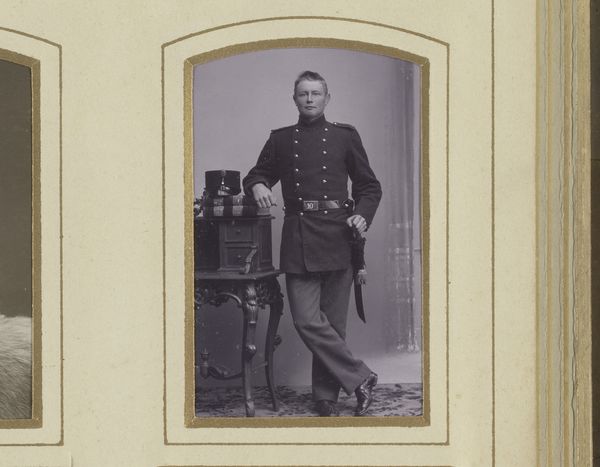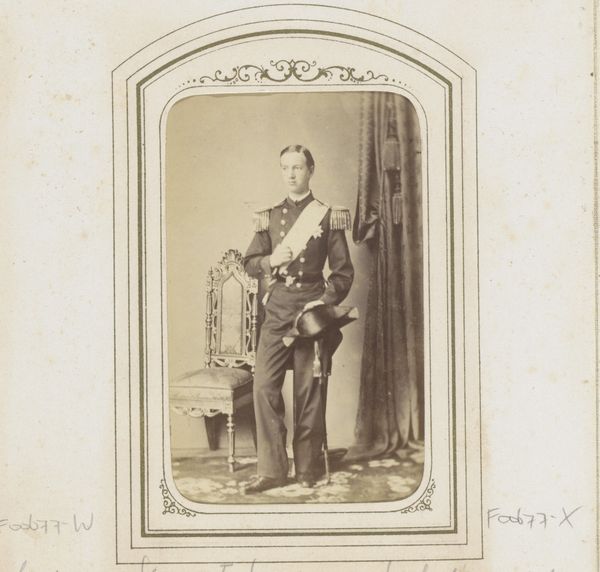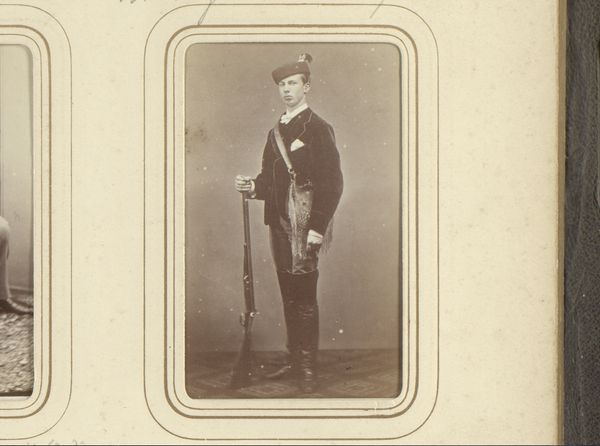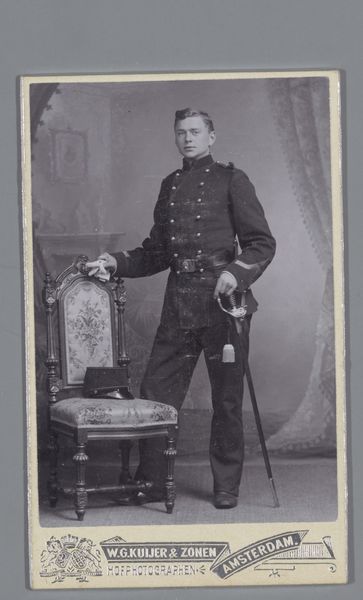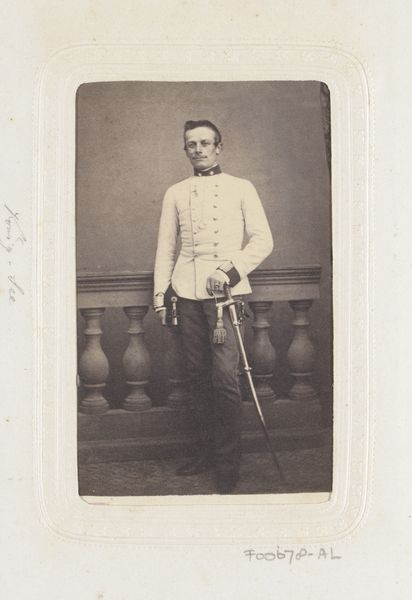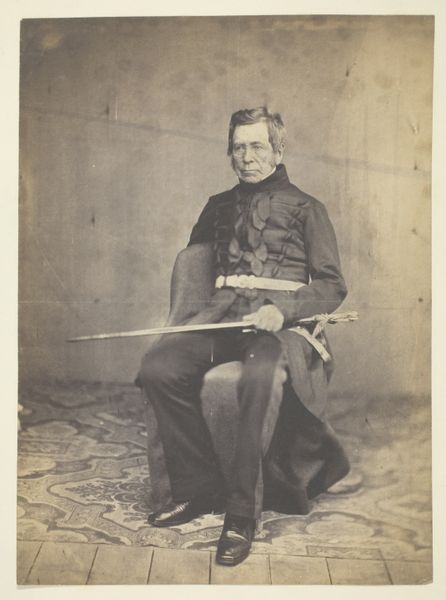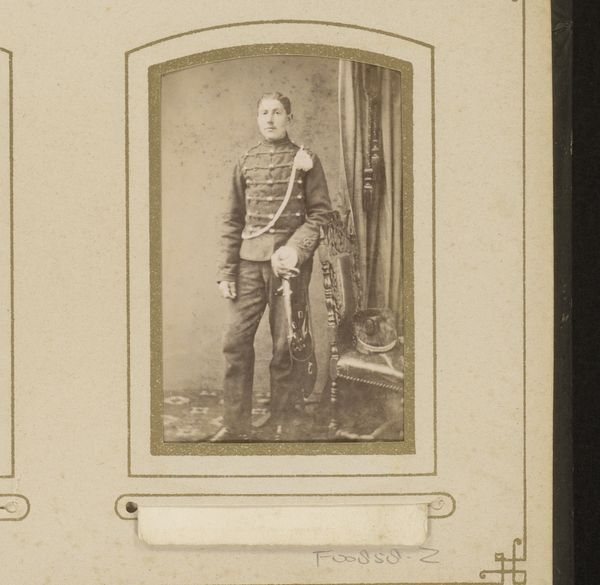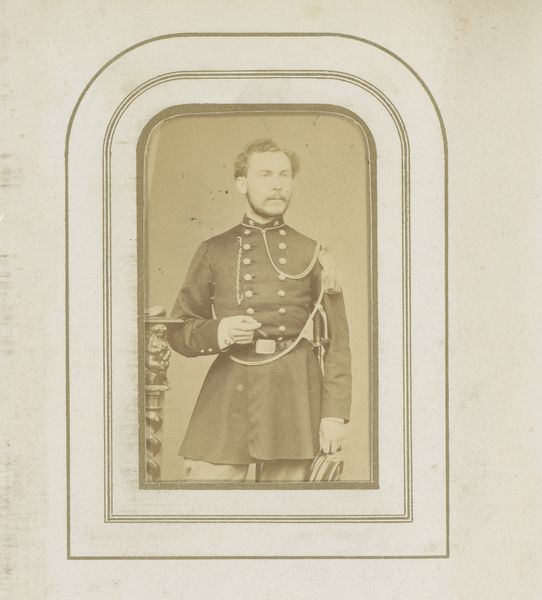
Dimensions: 20.1 × 16.4 cm (image/paper); 58.9 × 42.5 cm (mount)
Copyright: Public Domain
Editor: We’re looking at a gelatin silver print by Roger Fenton from 1855. It’s a portrait of General Sir J. Burgoyne. The general seems stern and formal, and the detail in his uniform is quite striking. What social dynamics might be at play in such a carefully constructed image? Curator: Precisely. Think about photography in 1855; it's relatively new, incredibly cumbersome, and expensive. Who gets photographed, and how they are represented, speaks volumes about power structures. Fenton, while celebrated as a war photographer, also carefully curated his image to maintain access. Burgoyne’s stance, the details of his uniform meticulously captured, reinforce not only his personal authority but also the authority of the British Empire at the time. The portrait isn’t just about Burgoyne; it’s about reinforcing societal hierarchies. Editor: So it’s less about individual likeness and more about embodying an ideal? Curator: Exactly! What are the ideals it embodies? Consider the legacy of military service, class, and masculinity. Ask yourself whose stories are amplified through these images and, perhaps more importantly, whose are erased. Editor: I guess I hadn’t really considered the choices inherent in even documentary photography of the era. I was too focused on the sitter and the way they were dressed. Curator: It’s a powerful example of how art, even what appears documentary, always involves selection, framing, and inevitably, ideology. It should invite reflection on what historical narratives we consider important and whose version of history gets to be told and preserved. Editor: This really highlights the need to view art as a product of its time, influenced by and, in turn, influencing societal norms. Thanks!
Comments
No comments
Be the first to comment and join the conversation on the ultimate creative platform.

